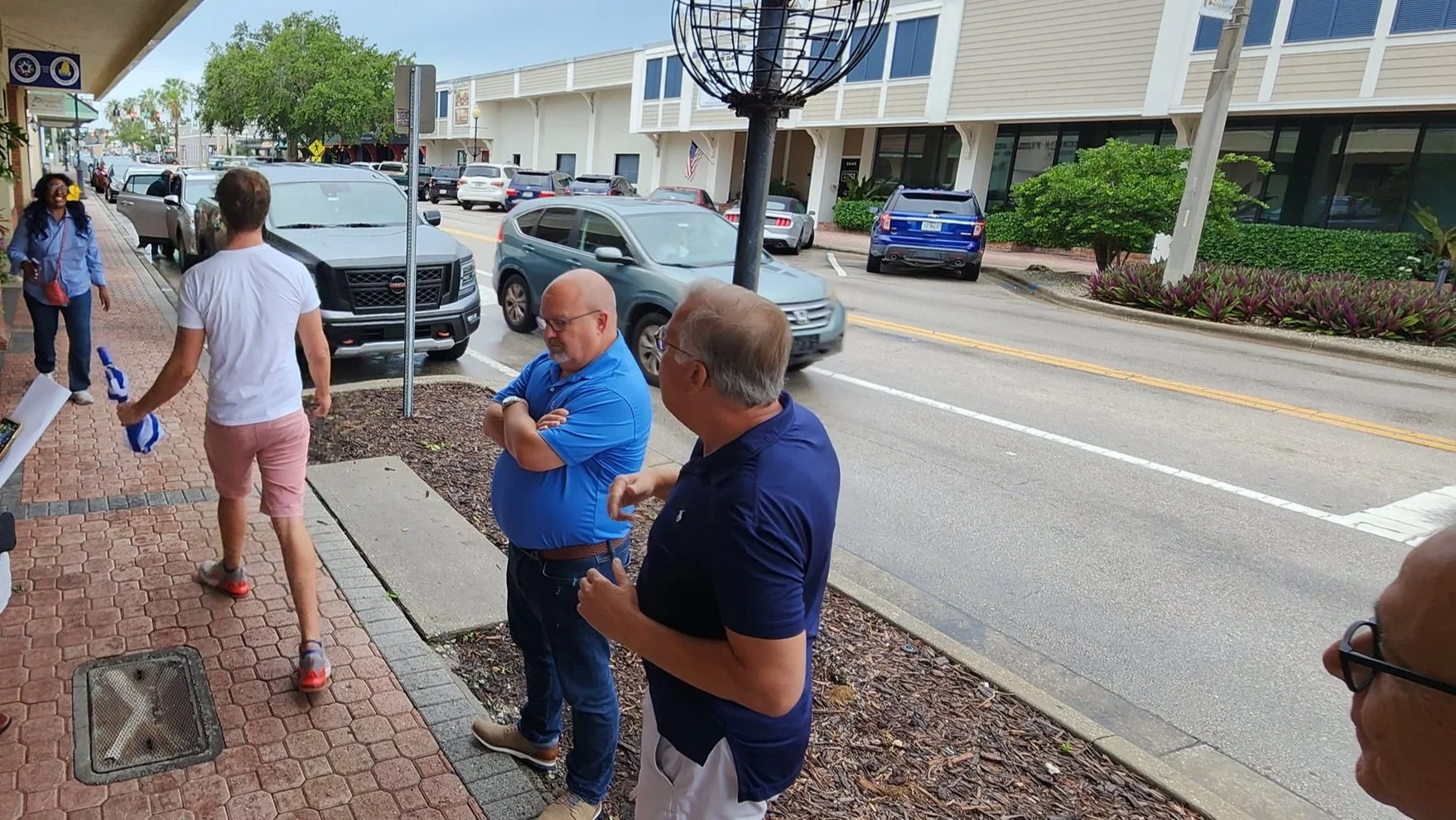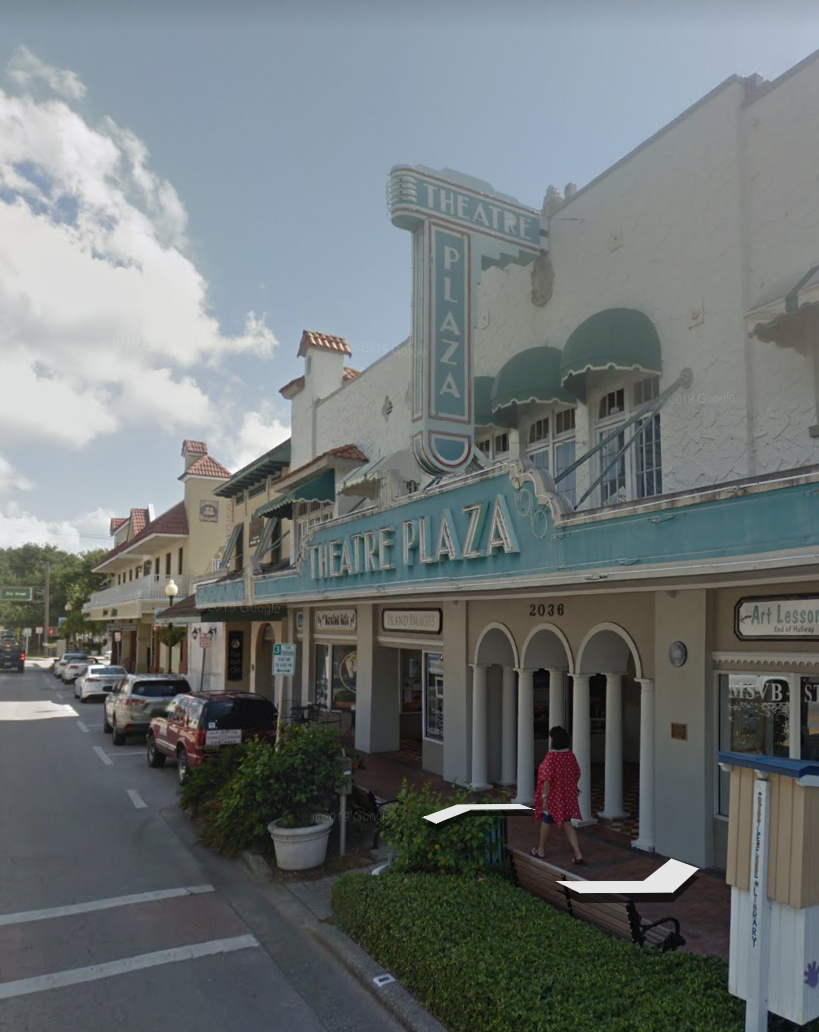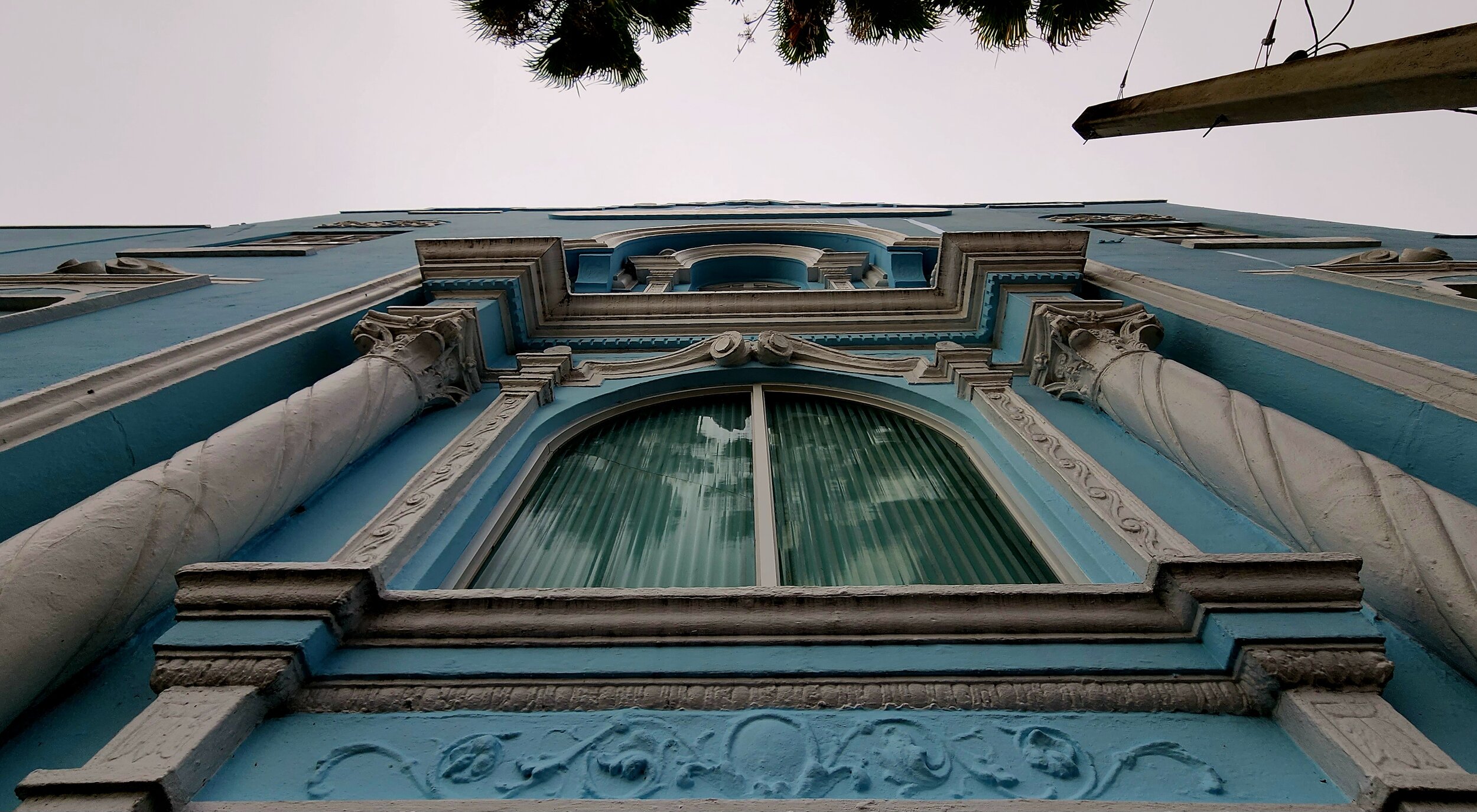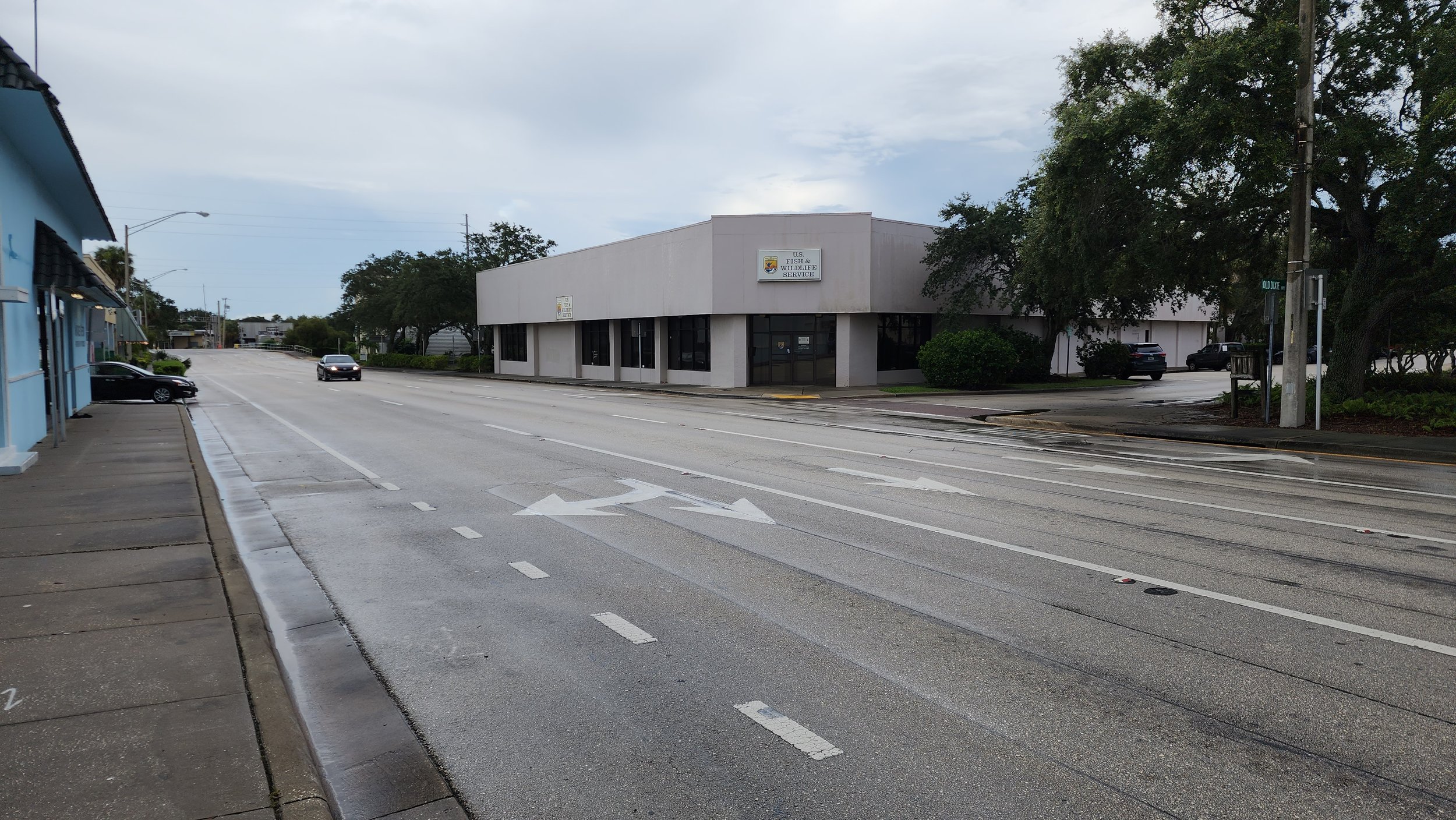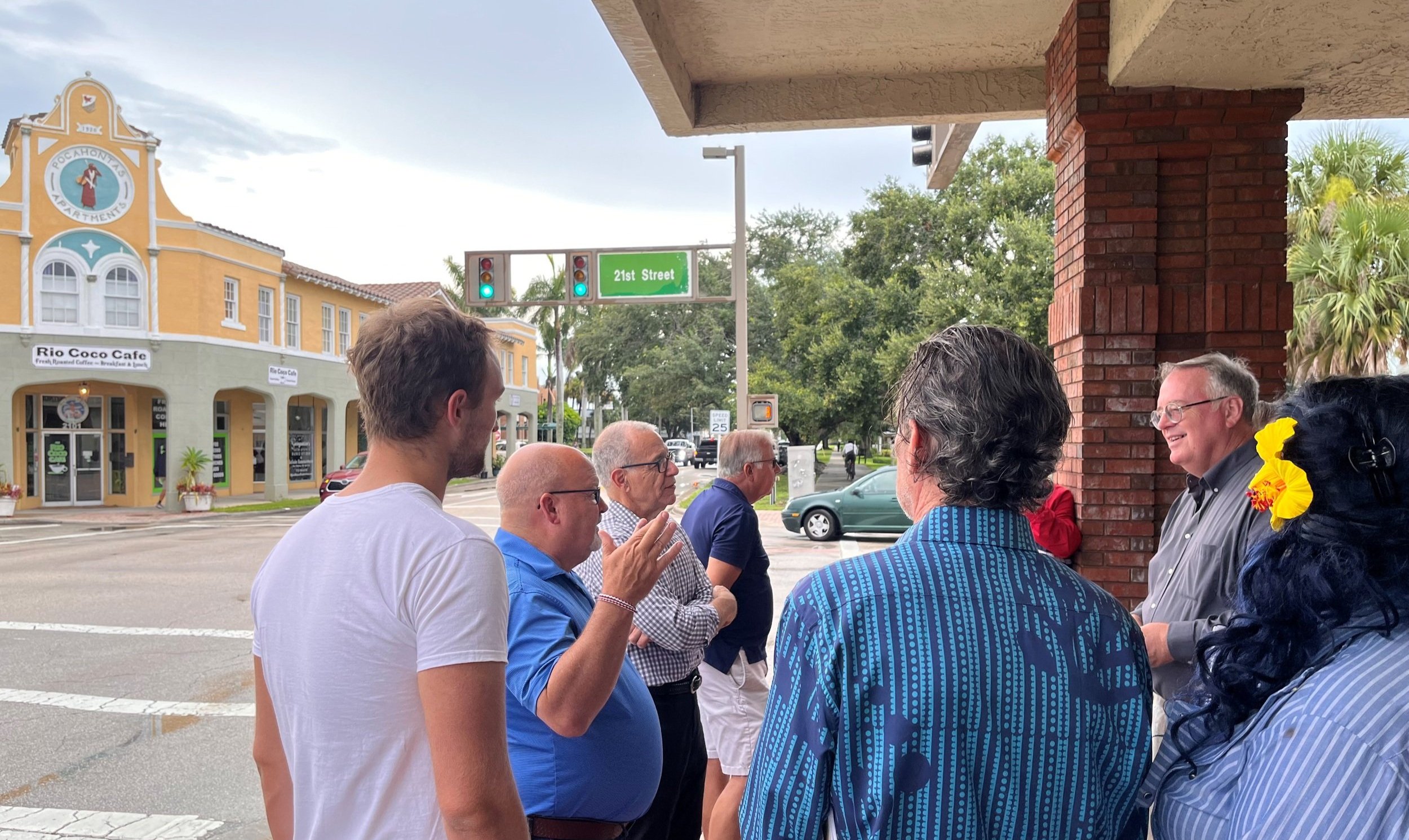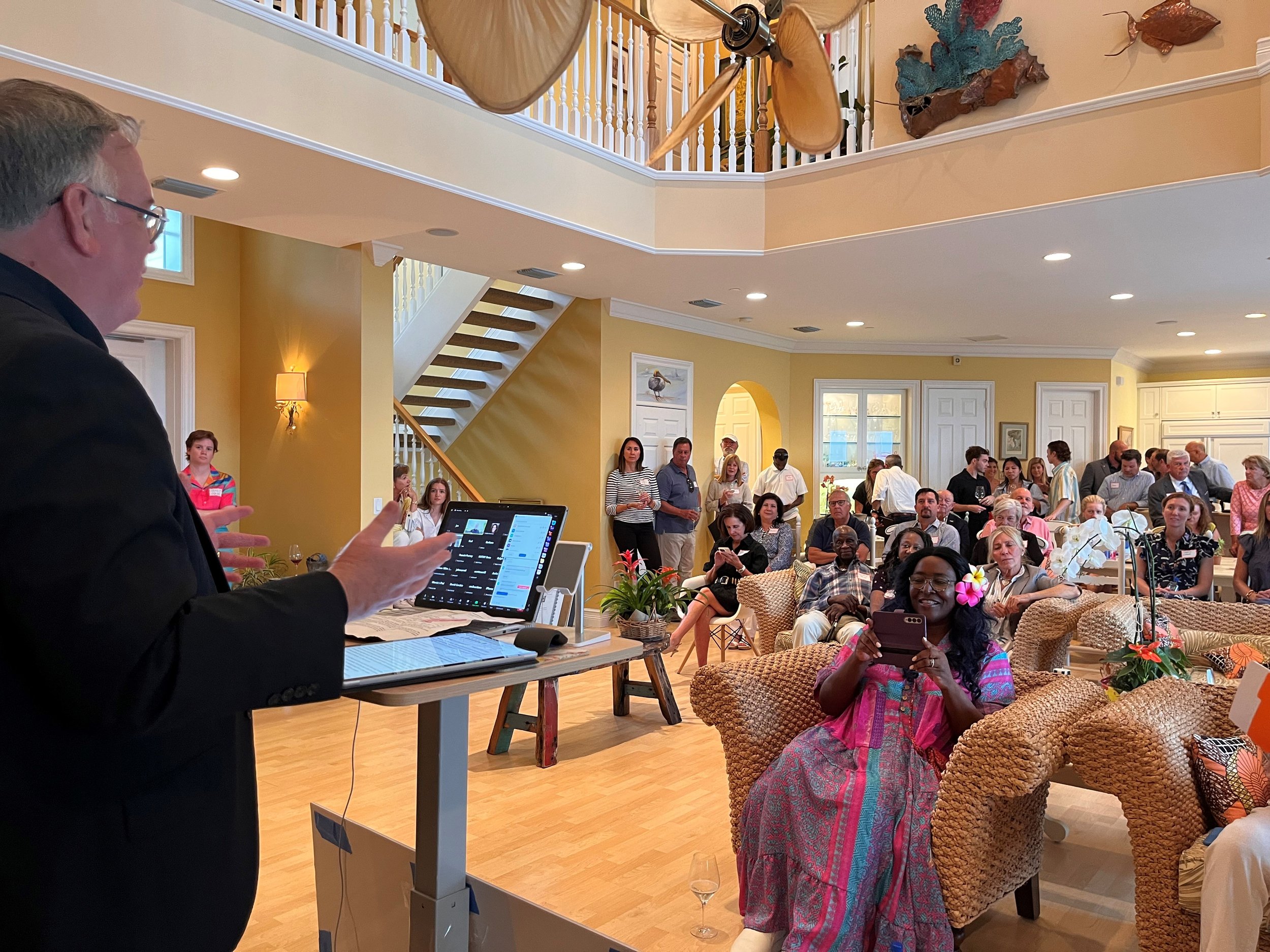In the off-peak times, all that extra asphalt is a clear invitation to drive faster
On July 19, 2023, Victor Dover addressed 200 Vero Beach citizens in person and online as part of the “Let’s Talk Vero” events series. The City of Vero Beach and Florida DOT are considering what to do about its notorious “Twin Pairs” combo of wide, fast, one-way roads. Here are Victor’s remarks:
BIG PICTURE: YOU CAN HAVE A BETTER AND BETTER TOWN
Thank you for having us in Vero Beach. I always say, we have the best job in the whole world, traveling and helping communities decide what they want to be when they grow up, grappling with growth and change amid a changing world. It is gratifying work.
Like Vero, most communities have a confidence problem: Is the change making things better or worse?
Walking tour with Vero Beach citizens in advance of the Let’s Talk Vero event
Think of the places you’ve visited that you loved. How did they get that way? They were designed (and redesigned) that way. Great towns don’t occur by accident, or come from Santa Claus or the Easter Bunny. They come from putting in the work, building consensus, drawing lines on maps, trying things, doing more of what works, adjusting what needs adjusting… Cities are great, collectively produced, collaborative, never-finished works of art.
Good news: You can have the town you want, if you’ll give yourselves permission to have it and work together to get it. In particular, it stands out that your most important shared spaces in the center of town—the downtown neighborhood, the twin pair corridors—are not yet evolved to the quality and vibrance that reflects your mostly-beautiful, affluent, well-educated, well-traveled community… at least not yet.
Google street view shows that Vero’s pioneers used unapologetically urban, street-oriented architecture, conveying their confidence in the future.
I look at the historic buildings and I can see that your founding families and early visionaries were convinced of this potential. From the days when the streets were just dirt or just had Model Ts rambling along them, those early mixed-use, Main Street buildings had this confident, upright architecture and a clear building-to-street relationship.
When in Vero Beach, look up: The early architecture was meant to shape a proud human habitat. It was meant to be experienced at walking pace.
I’ve learned you’re undertaking a downtown revitalization plan, and that is great to hear. It’s not necessary to figure out absolutely everything in advance, and it will not be a tool that has to boast 100% consensus to be useful. But it will be a great aid in building confidence. Where do great places come from? They come from you. They come from starter conversations like the ones you’re having in Let’s Talk Vero.
Blight is an often inevitable— but usually reversible— effect of America’s binge of road-widening and traffic-accelerating.
STREETS MATTER
Now, let me ask you: What’s the largest thing you own? Your city’s streets.
The subtitle of the book John Massengale and I wrote about Street Design is, “the secret to great cities and towns.” I became convinced that good street design is probably the one feature a city can least afford to get wrong, and yet it is the feature most often gotten wrong.
Tour group in downtown Vero Beach
It’s basically this: Streets are where we form our most lasting impressions of a place. It’s not just the buildings, although those matter a lot; it’s the spaces between buildings, like the parks and squares and streets (and especially the streets) that are the public rooms of the city. In Vero, your streets are your commons. Owned by everybody. Or perhaps nobody. I don’t mean to be too harsh, but in some of those streets one can see the Tragedy of the Commons playing out. They aren’t conveying the kind of confidence such corridors can and should convey.
I urge you: Don’t take the attitude that the streets are someone else’s problem. They are not just “transportation facilities.” They’re addresses.
When they work as they should-- at least in the part of the city where you care about economic vitality, about property value, about eight year olds, about eighty year olds, about small and large businesses, about public health and safety, and about environmental fitness—which is to say, every part of a beloved city—the streets should be designed as human habitats, places where people want to be.
Some of the things that need to be there include street trees, low-stress spaces for walking and biking, and good building-to-street relationships. You don’t have to be a wildlife biologist to size up these habitats-for-cars. You don’t have to be an anthropologist or sociologist to know that our species is repelled from places that have blank walls facing streets or have high-speed motoring with all its noise and violence, but we’re attracted to places with shade and artfulness and visual interest and, importantly, evidence that other people are around.
THE NEIGHBORHOOD PLAN
The great thing about coordinating your efforts on street design within a larger core-area master plan is that, since everything is connected to everything else, you can make informed decisions. As we walked yesterday I asked: What are this neighborhood’s basic economic and humanistic reasons for being? These change over time. Fort Pierce was once the place the cattle drives brought protein to market, to load on the barges. Now it’s evolving to 21st Century uses. Vero has been a citrus town, which is of course changing, and a holiday town for visitors and seasonal residents. Within that evolving mix, what’s going to be the core area’s root function?
I think as you ponder that, the street design decisions, the architecture decisions, the zoning decisions will all then become much easier. You might want to open up the options for more housing and more lodging in the core area, to bring more customers within walking distance of that great coffee shop, for instance, so it’ll have the customers it needs to be there when you, as a local fulltime resident, want to go there.
NEW TIMES, NEW RULEBOOKS
Last, I want to talk about something new, something you all need to know when working with your friendly neighborhood FDOT (Florida Department of Transportation). It’s this: the rules have changed. Over decades, it always seemed like the DOT was always saying NO to the things local government leaders wanted, like safer streets and saner, right-sized, appropriate-speed streets. They would say, Madam Councilmember or Mister Mayor, we can’t do that, our one-size-fits-all rulebook doesn’t allow it.
First: Think back to the Happy Motoring era, the 1950s or 1960s, when many of us were born, and we didn’t know it but in those postwar years we were living in the last phase of the Golden Age of the Automobile. There was this forceful, national, propaganda-fed idea that “wider, faster roads [were] better roads.” That plugged into everything: budgets, manuals, high-octane federal subsidies; that was the era of “what’s good for General Motors is good for America” and it was a public works juggernaut. Traffic flow was… everything. Many other community ideals—like safety and strong property values, to name a couple—were de-prioritized. And you can understand it; who wouldn’t want to flow? Road widening, highway-building, and rebuilding, and re-re-building was the order of the day, and the motoring public was okay with huge amounts of the national treasury being spent on it. Old gasoline ads said, “Drive more, it gets cheaper by the mile.”
The innovations like cloverleaf interchanges and the fads, like one-way pairs, came fast. Yours is not the only town that got the one-way-pairs-and-road-widening treatment. It was seen as a way to squeeze a little more flow out of the intersections during the peak seconds of the peak hour. And, it seemed like a good way to spend all that federal money raining down on the states, even if we didn’t really have the traffic numbers to justify such wide streets “yet.” (You still don’t.)
Ironically, speeding everything up was exactly the opposite of making it safer and more efficient.
These roads became less safe and less hospitable because, outside the peak hour, all that extra asphalt provides a clear invitation to higher speeds. Remember, humans tend not to drive the posted speed, but rather the speed that feels comfortable given all the visual clues coming into your eyeballs through the windshield—and so if it looks like the Indianapolis Speedway, we drive as if we’re on the Indianapolis Speedway.
In turned out that in many cases the one-way pairs were undercutting their own on-paper efficiency, too, because if you have to drive twice as far and go out of your way and drive through five or six intersections instead of two, you’re doubling up the vehicle-miles-traveled per person and, while you’re getting turned around to get to your destination, you’re in my lane, when I’m in such a hurry, for whatever reason. You’re messing with my flow! No happy motoring for me.
Note: Fads fade, and many towns have been gradually undoing their one-way pairs and repurposing unneeded lanes, rebalancing flow against the whole range of other issues.
Now, back to the manuals.
The many consequences of the road-building binge include a terrible safety record, especially in the relatively new settlements of the Sunbelt. The biannual report, called Dangerous by Design, shows Florida every time as the champion state… at killing pedestrians. And of course, it’s not just people walking and biking getting killed, it’s the victims of car-on-car violence as well. We’re at the point where we’re killing 40,000 persons a year in our mean streets, and it’s a major public safety crisis. A leading cause of death among those under 25, for one thing. And where are more of those deaths and injuries occurring than anywhere else? Florida.
So a few years ago, embarrassed by the latest headlines on Dangerous by Design, the state Secretary of Transportation said, let’s fix it. He challenged his department to find a way out of the number one Death Machine status. He ordered the FDOT to rework all its rulebooks-- and they’ve done it. More info here.
They now have permission to say yes to things they used to dismiss, like safer design speeds and better lane geometries and all the features that aid safety. So remember this: You can get familiar with the new rules, and bring the District 4 FDOT engineers along with you on your search for better street designs. That way when they come around to do their resurfacing projects every 25 years or so, you can work with them to settle on designs that aren’t just resurfacings but meaningful redesigns.
The new rulebooks can be your superpower. For the nerds like me who might want to Google this and get into the tech of it all, search for FDOT FDM (Florida Design Manual) and “context classifications.” To make a long story short, it means, they no longer have to follow one-size-fits-all-- so they don’t have to treat a core downtown like it’s out in the distant sprawl strip or I-95.
I’ll conclude with one important admonition:
You need to do your best to arrive at local consensus first, and then re-engage FDOT. The Districts have been burned before, moving forward on the road diets and lane repurposings that the manuals now allow and even encourage, only to have the local folks reverse themselves and back out. So have some sympathy for your DOT officials, and have the conversation now.
Just having the conversation will bend the trend! So congratulations on what you’re doing with Let’s Talk Vero.

